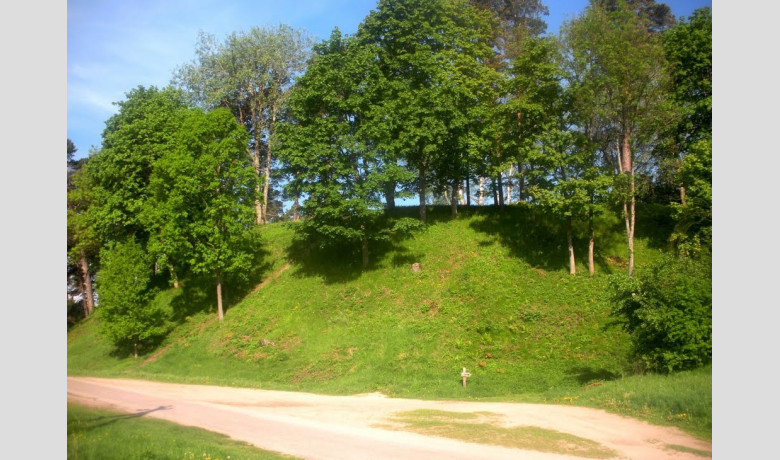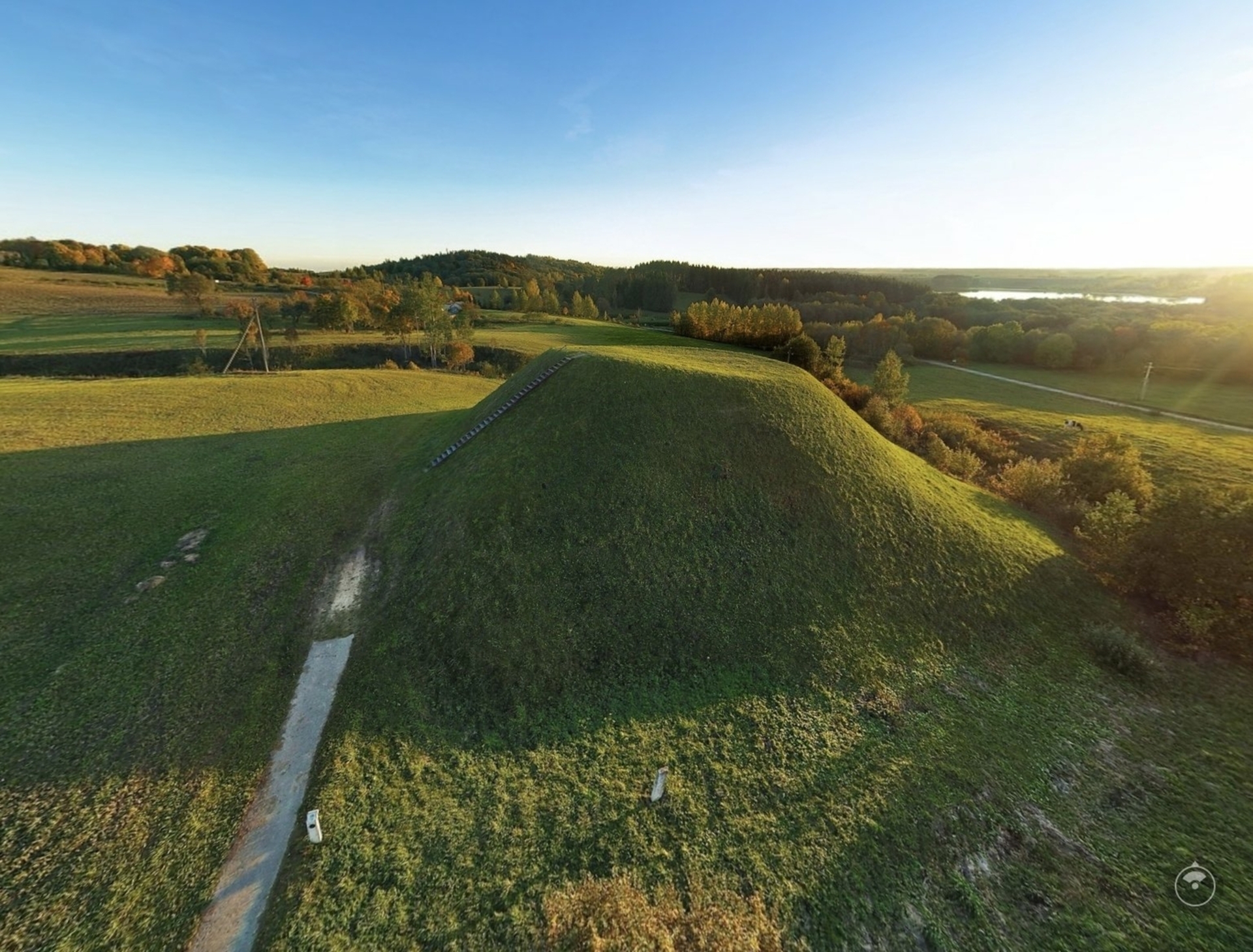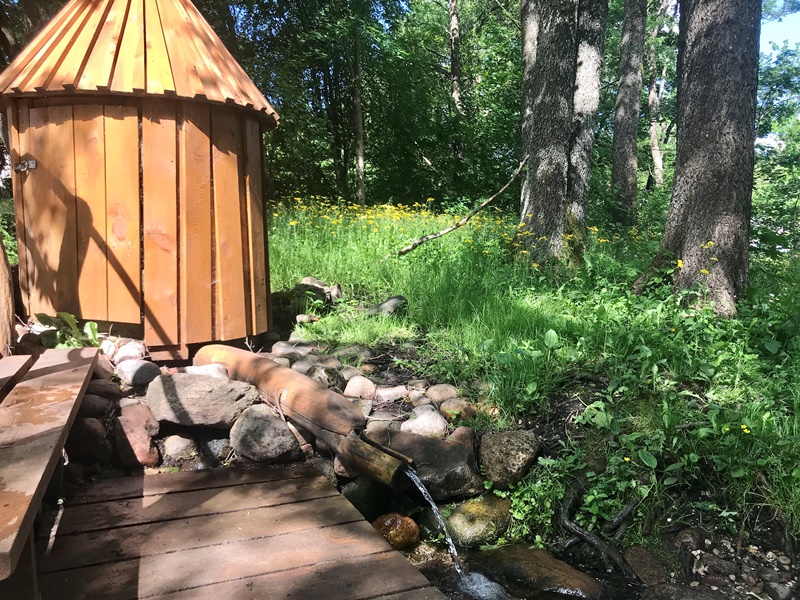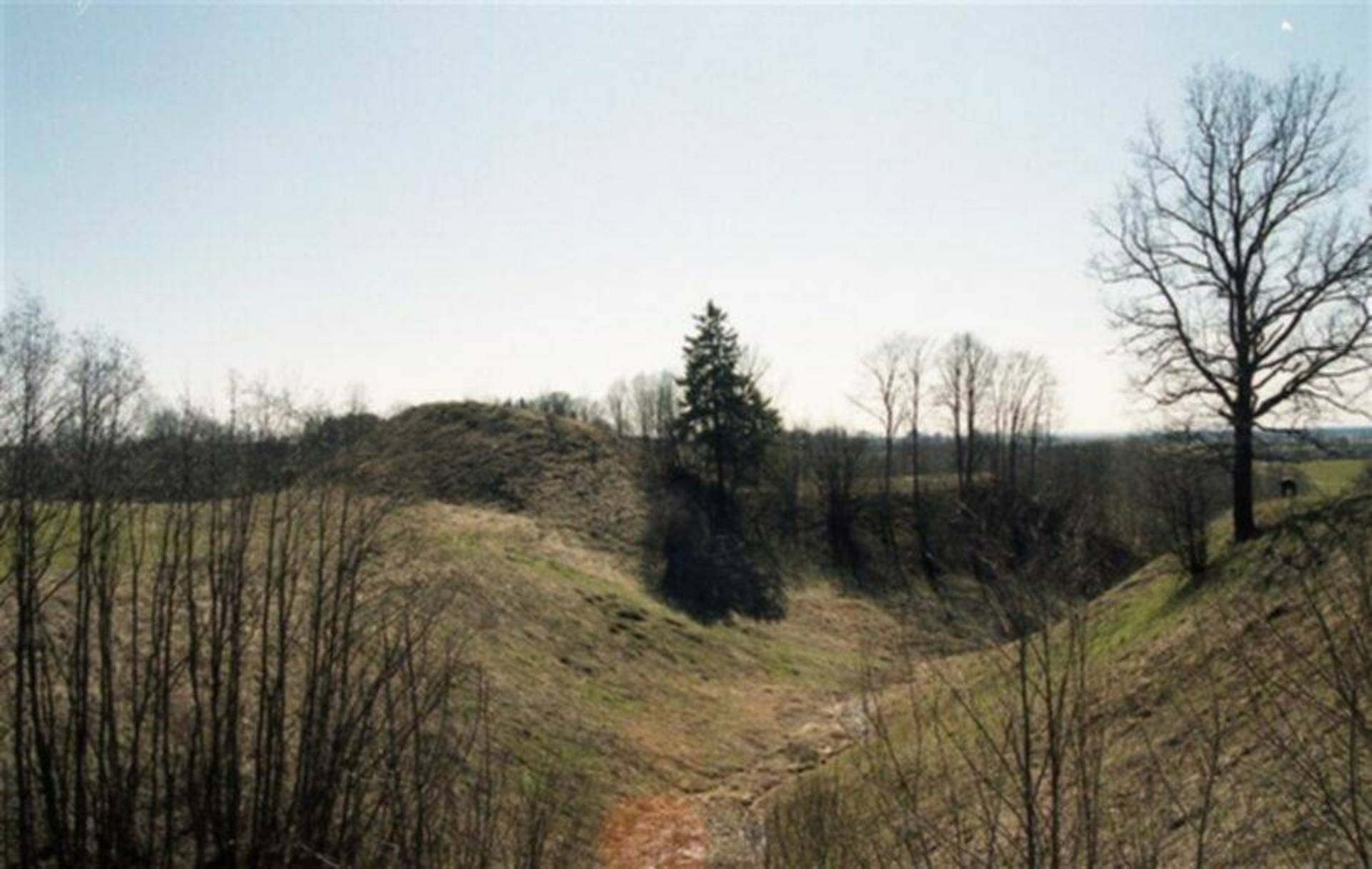Medžionys Hillfort

127

0

0
Medžionys Hillfort, located near Medžionys village (Stakliškės eldership), is situated on a prominent highland promontory where the waters of the Virkys River and an unnamed stream meet. The slopes of this hillfort are particularly steep, reaching up to 15 meters in height. The hillfort's platform is rectangular, measuring 44 × 18 meters, with a distinct rampart on the northeastern side, which is 7 meters high and 18 meters wide. This rampart extends into a ditch that is 60 meters long, 24 meters wide, and approximately 1.5 meters deep. Additionally, on the southwestern side of the hillfort, there is another rampart, which is 16 meters long and 0.8 meters high.
Info
-

Mounds
-
Prienai
-
Whats new?
Nearby attractions

 Entertainment
Entertainment
 Food establishments
Food establishments





























 54.666836, 24.344576
54.666836, 24.344576
 Get directions
Get directions








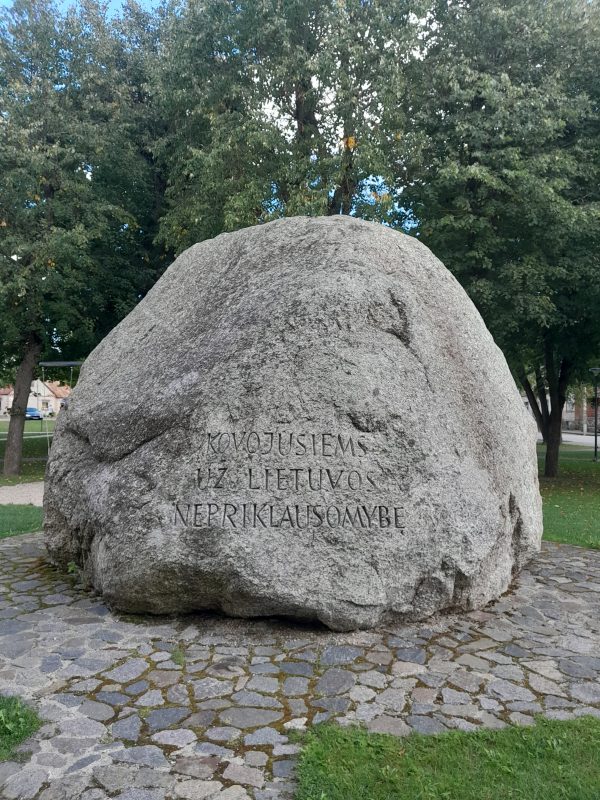
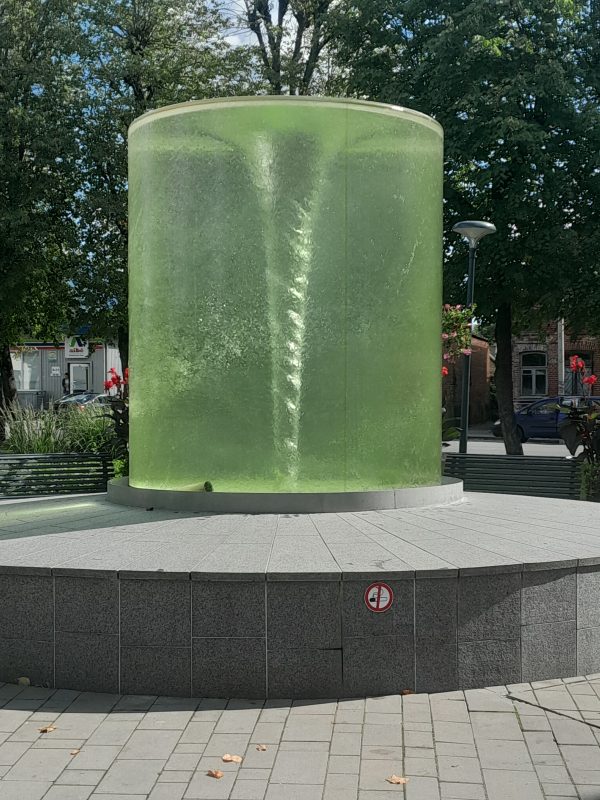

.jpg)
